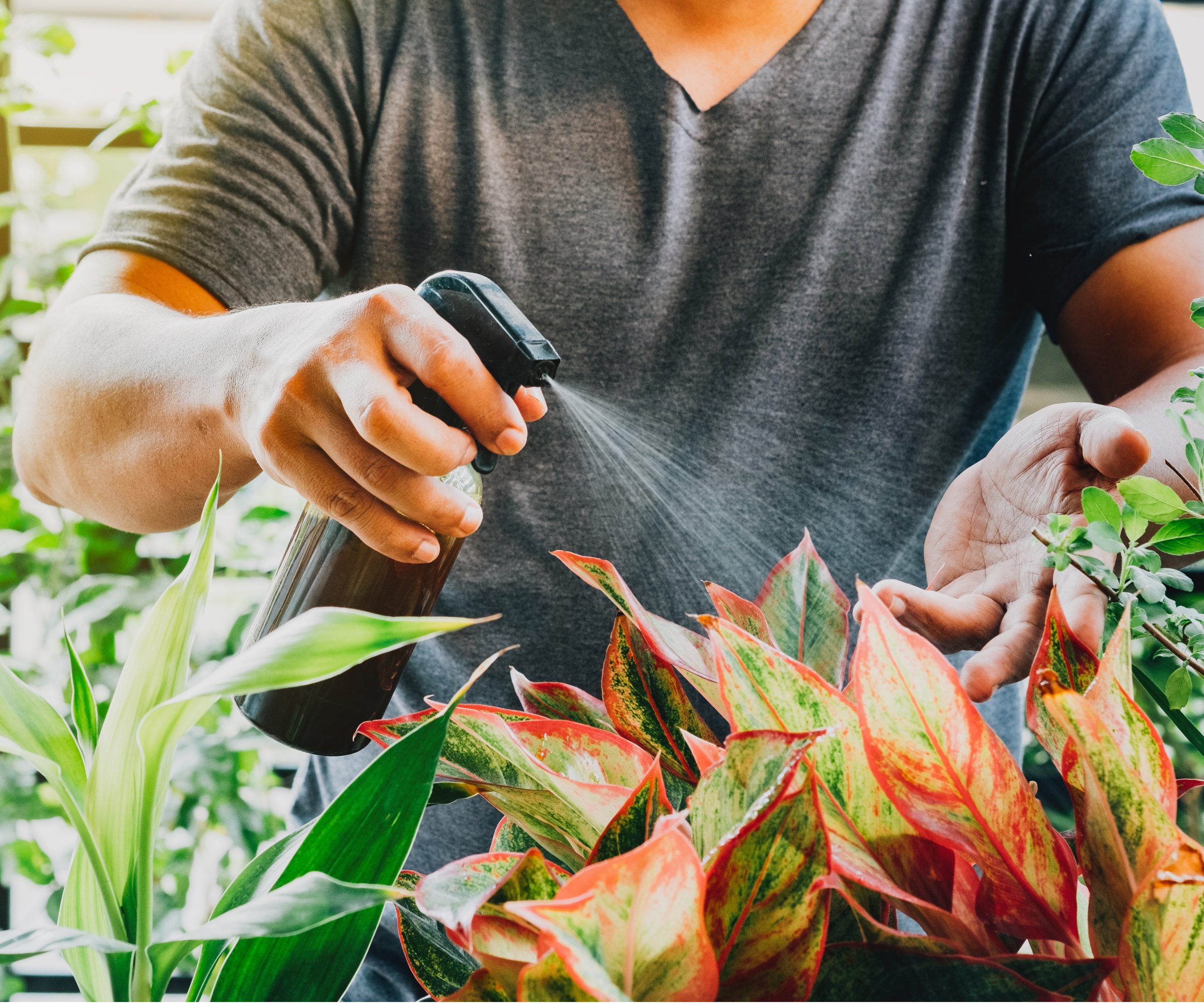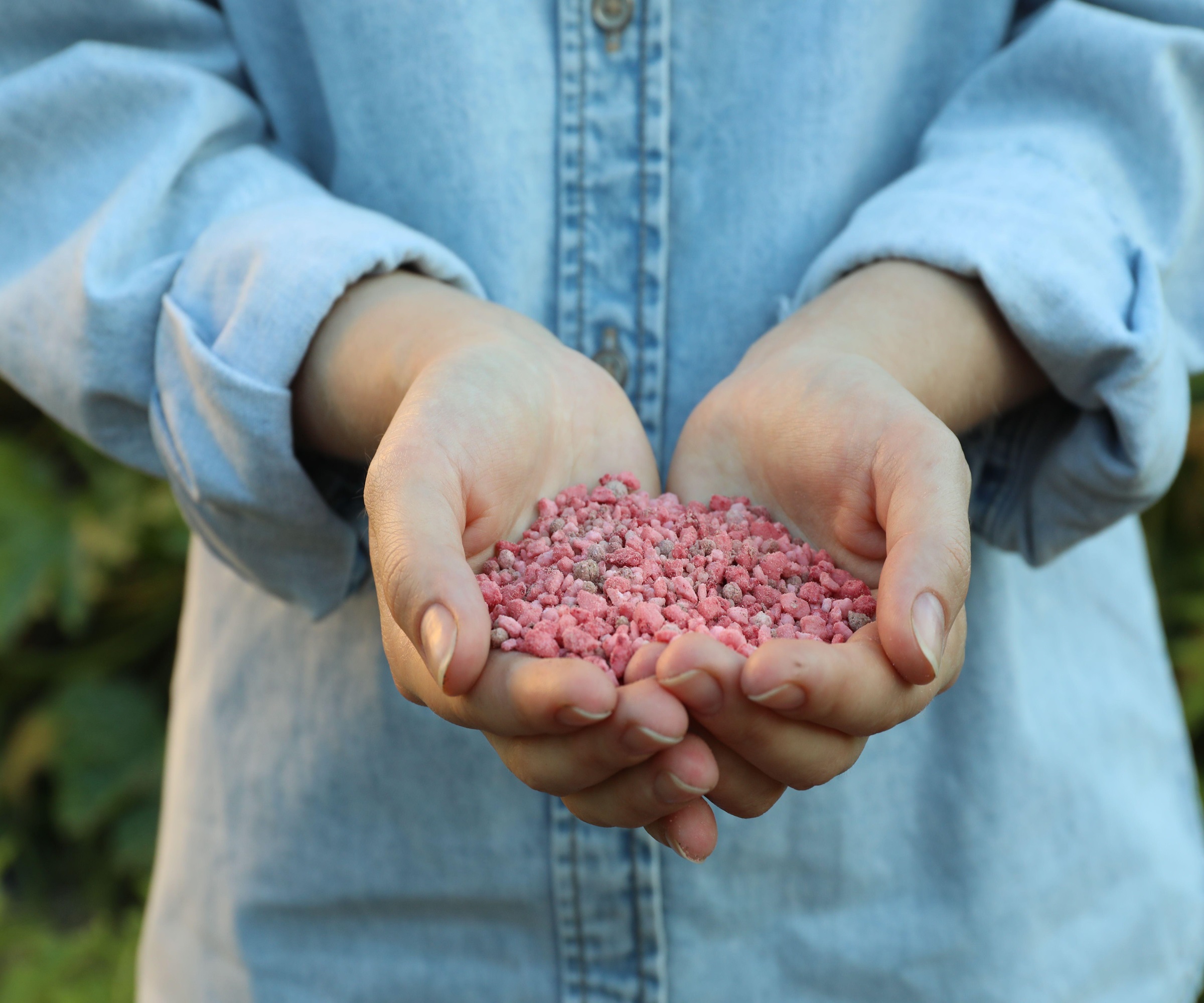What does fertilizer do for plants? We reveal the reasons why feeding is vital
Bright foliage, big crops and an abundance of blooms are just some of the benefits of plant fertilizer


If you're a novice gardener, or perhaps you're starting to add to the planting in your yard, there's no doubt you've stumbled across fertilizer products. Fertilizer is plant food packed with nutrients - but, what does feeding your plants really do for them?
Whether you're making your own fertilizer or using commercial products, there are so many ways fertilizer can benefit your plants. Even using homemade compost can feed and nourish your soil, all resulting in stronger plant growth.
With so many types of fertilizer and each plant benefitting in different ways from specific ones, it can be overwhelming to navigate the world of fertilizer. That's why we've compiled everything you need to know about what fertilizer does for plants and the best type to use - just in time for Global Fertilizer Day.
What does fertilizer do for plants?

In short, fertilizer feeds your plants by nourishing soil health with essential nutrients that are soaked up by plant roots. 'Fertilizers provide key nutrients like nitrogen, phosphorus and potassium that promote plant growth,' explains Matthew Koch of Scotts Miracle-Gro.
The plant fertilizer numbers found on fertilizer products indicate the volume of each of the NPK nutrients. Nitrogen largely supports vegetative growth and strengthens the ability for plants to photosynthesize; Phosphorus encourages root, fruit and flower growth; Potassium is key for moving water and nutrients around plant tissue.
While it's true different soil types will already hold percentages of these nutrients (you can test your soil with this test kit from Amazon to find out what your soil is made up of), using a fertilizer can boost them. This is beneficial for a number of reasons.
'As many vegetables are heavy feeders, they require lots of nutrients throughout the growing season and benefit from regular fertilization,' says Drew Swainston, former professional gardener and content editor at Homes & Gardens. 'This is especially important when growing vegetables in containers, as they can quickly use up all the resources in the potting soil,' he adds.
Design expertise in your inbox – from inspiring decorating ideas and beautiful celebrity homes to practical gardening advice and shopping round-ups.
As well as ensuring vegetable plants are getting sufficient nutrients, fertilizing ornamental garden plants, houseplants and even fertilizing a lawn is important. If you notice yellowing foliage or a lack of growth, it can be a sign of a nutrient deficiency. Using a fertilizer can help resolve this issue.
Of course, there are plenty of fertilizing mistakes to avoid. It is possible to over-fertilize plants, especially if you're feeding your plants at the wrong time of year. Too much fertilizer can cause a number of problems, including root rot, root burn and discoloring foliage. It's best to follow manufacturer instructions and research how and when to fertilize your specific plants.
From fertilizing a monstera to fertilizing roses and knowing when to fertilize seedlings, getting the volume and timing right are all key to reaping the rewards of fertilizing.

Born and raised in New Jersey, Dr. Matthew Koch joined Scotts Miracle-Gro in 2012 after finishing his PhD work in plant genetics and breeding at Rutgers University. He began as a scientist in the Biotechnology program and has held a number of leadership roles since. He is currently the director of biotechnology, genetics, and seed, where he oversees the R&D activities of these teams.
What's the best type of fertilizer?

With so many fertilizer products on the market, where do you get started? Different products are made up of different ingredients, provide different nutrients and come in different forms - for example, sprays, liquid solutions and slow-release granules. The first thing to do when choosing a fertilizer is identify what your plants need and the best method of feeding them.
'When searching for the best fertilizers for a vegetable garden, I have used organic slow-release and balanced fertilizers for many crops at the start of the season, such as chicken manure pellets (available at Amazon). Such feeds provide nutrients for a long period,' says Drew. 'A faster-acting liquid feed can be added during the growing season for additional boosts of nutrients for hungry crops, including tomatoes, peppers and pumpkin,' he explains.
Balanced fertilizers are those with an equal NPK ratio. Whether you opt for a granular type that releases slowly (like this all purpose fertilizer from Amazon) or a liquid fertilizer (like this all purpose liquid fertilizer from Amazon), a balanced fertilizer is a reliable choice for a general boost of nutrients.
However, if your plant requires plenty of one nutrient (eg to recover from a deficiency or to grow fruit), then it's best to opt for a fertilizer rich in that nutrient. For example, this bone meal fertilizer from Amazon is rich in phosphorus and this blood meal fertilizer from Amazon is rich in nitrogen.
'It's key to ensure the nutrient make up in fertilizer is right for the plant. For example, using a high nitrogen fertilizer will develop lots of leafy growth rather than develop fruits. Such a feed is great for leafy crops, like lettuces and spinach, but not for ones like zucchini or squash where you want the fruits to grow rather than lots of foliage,' says Drew.
There are also many plant-specific fertilizers on the market - like this liquid fertilizer for indoor plants from Perfect Plants Nursery and this liquid tomato fertilizer from Perfect Plants Nursery - which will serve the needs of the plants you're growing.
'Always make sure the fertilizer you use is suitable for the plant you are giving it to,' Drew advises.

Drew qualified as a journalist and wrote for many websites and publications, before studying for a horticulture qualification. He worked as a professional gardener for several years, specializing in kitchen gardening. He's now bringing his expertise and passion to Homes & Gardens as a member of our team.
FAQs
How do you fertilize plants?
How you fertilize a plant all depends on the type of plant it is and the type of fertilizer you're using. Liquid and water soluble fertilizers can be added to water and then fed to your plant's soil, while slow-release granular fertilizer can be spread evenly at the base of your plant. As you water your plant, the granular fertilizer will be released to the roots. If you're using plant food such as pellets, bone meal, compost and other organic matter, apply an even layer around the base of your plant. Once again, the nutrients will be slowly released to your plant's roots as you water it.
As well as using commercial fertilizers, it's possible to make your own for different plants. For example, you can make your own tomato fertilizer with nettle tea and coffee grounds, or try making your own rose fertilizer from kitchen scraps. Making a composter is a great way to get started with using organic matter to feed your plants.

Tenielle is a Gardens Content Editor at Homes & Gardens. She holds a qualification in MA Magazine Journalism and has over six years of journalistic experience. Before coming to Homes & Gardens, Tenielle was in the editorial department at the Royal Horticultural Society and worked on The Garden magazine. As our in-house houseplant expert, Tenielle writes on a range of solutions to houseplant problems, as well as other 'how to' guides, inspiring garden projects, and the latest gardening news. When she isn't writing, Tenielle can be found propagating her ever-growing collection of indoor plants, helping others overcome common houseplant pests and diseases, volunteering at a local gardening club, and attending gardening workshops, like a composting masterclass.